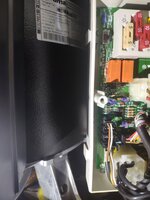- Nov 19, 2020
- 45
- 28
- Funster No
- 78,019
- MH
- CITROEN LA TRADA
- Exp
- Since 2015
I have used voltmeter on FA4. No readings either when ignition on or off.""""".The simulated D+ signal is derived from an ignition switch controlled supply. It is I believe monitored by an integrated circuit (operational amplifier) on the DSxxx, and operates a small rectangular relay. The contacts of this relay control the split charge and fridge relays. The same output is made available at FA4 for satellite dishes etc. This is a useful test point."""""
you will have to open up the ds300 unit to check this..
Andy
.


